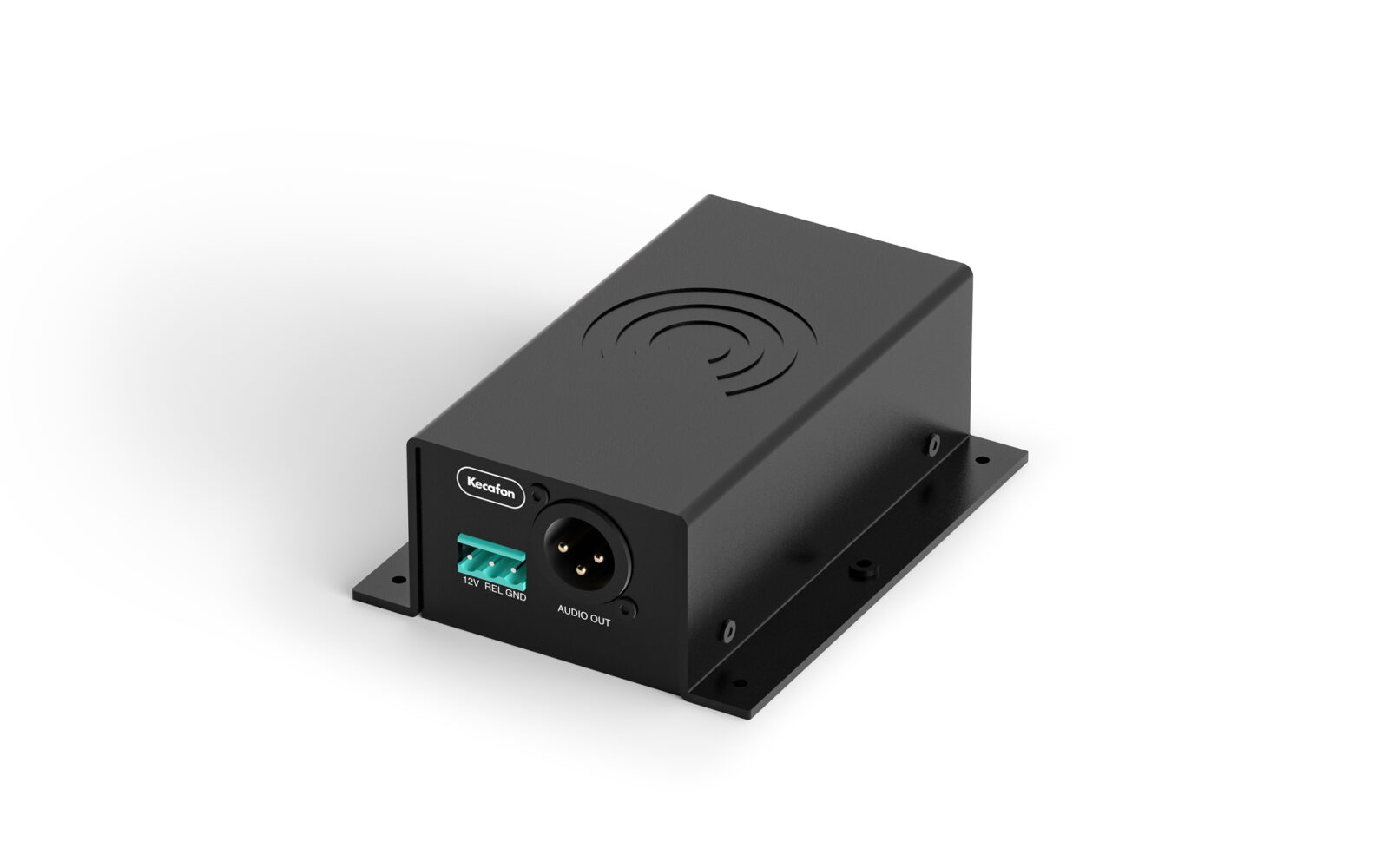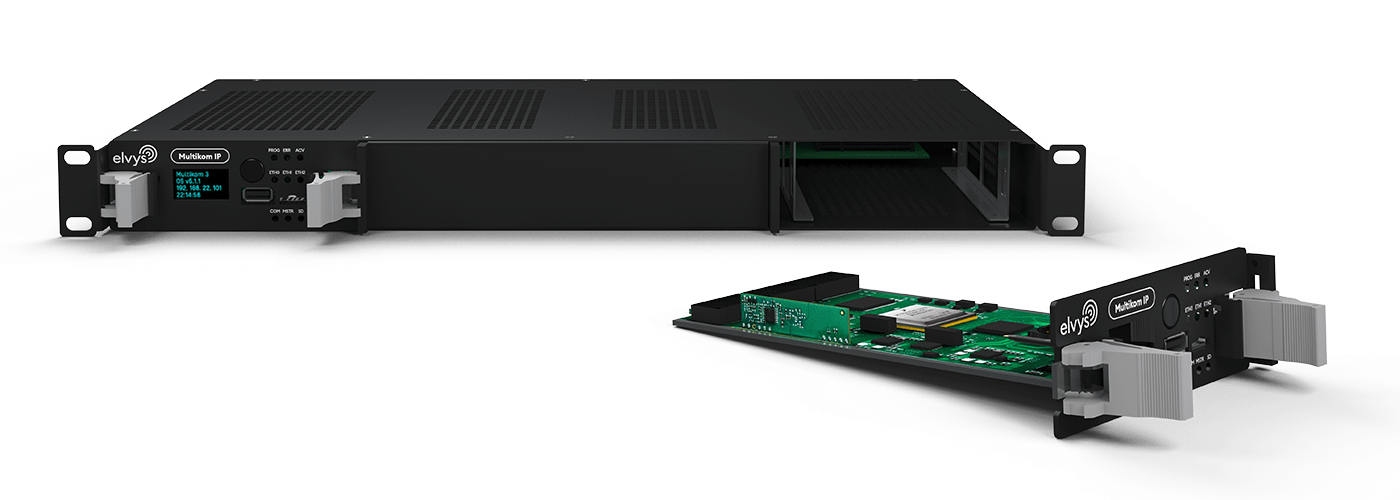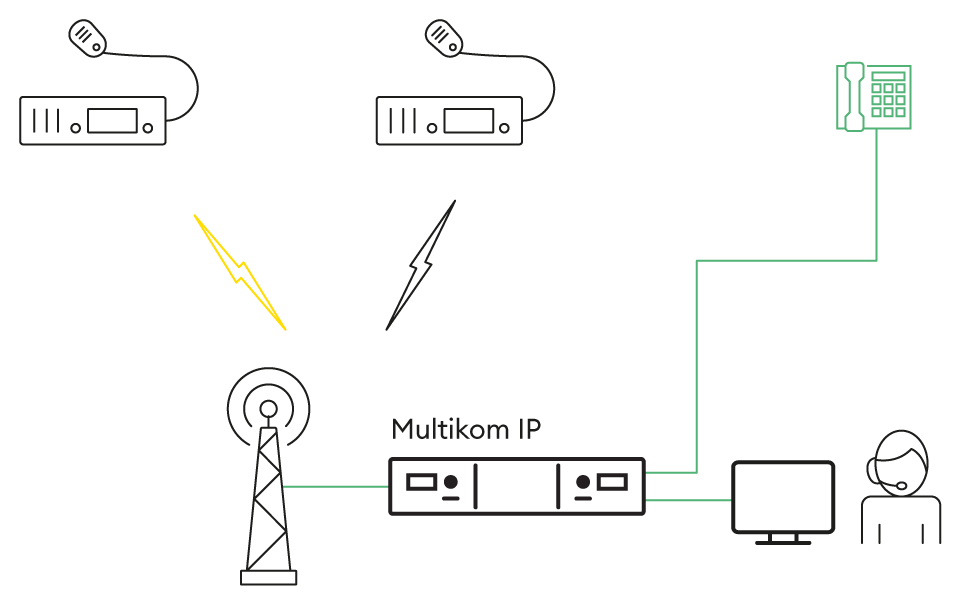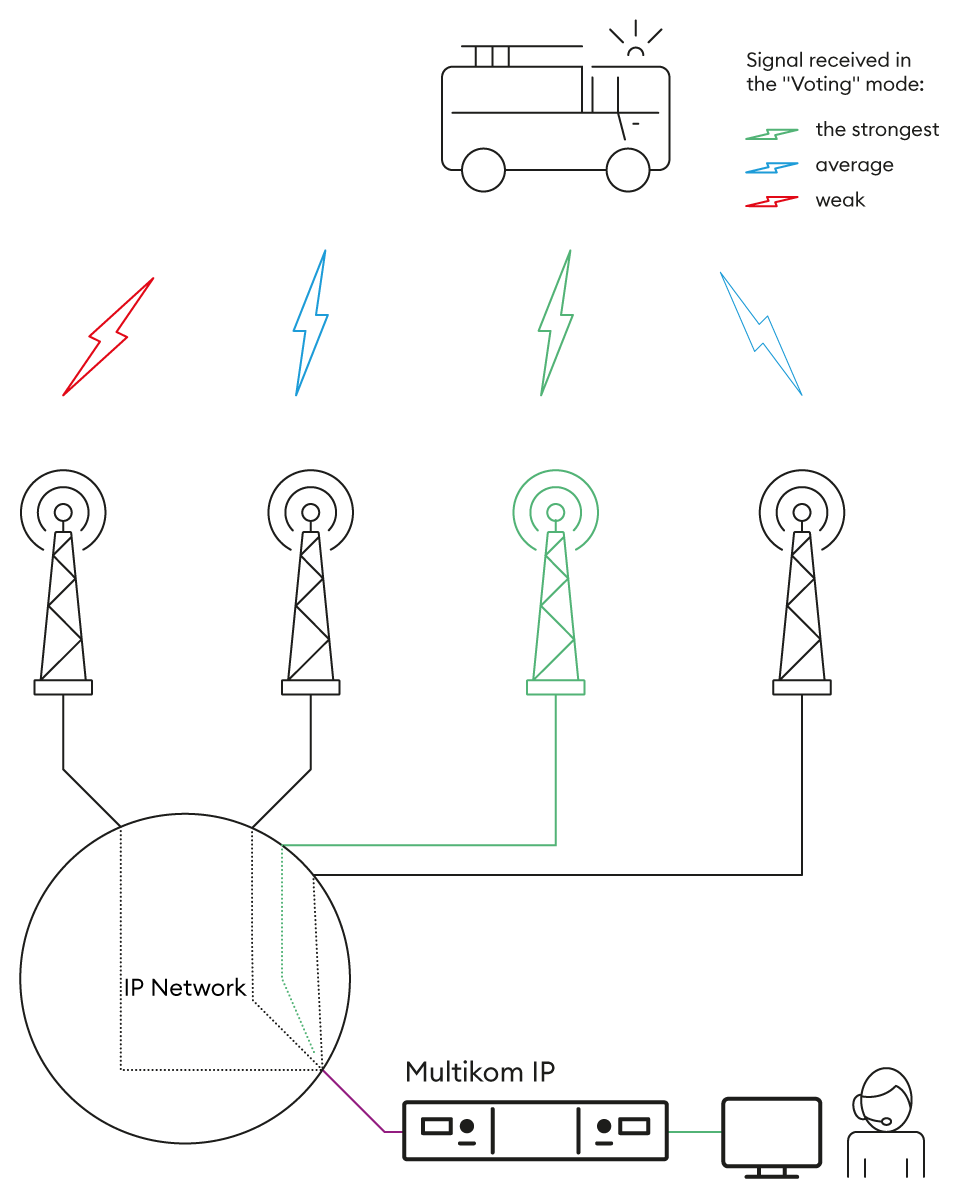To ensure backwards compatibility and interoperability with circuit-switched networks, Multikom IP is also equipped with a PCM interface, allowing integration with existing Multikom 2 system interface cards. The system was also designed to be easily expanded if a greater capacity becomes necessary.
The Multikom system uses the IP protocol, therefore all peripherals can communicate with it, e.g. digital dispatch consoles, local and remote radiotelephone controllers, VoIP telephony networks, and digital radio system networks (DMR, TETRA, NEXEDGE and others). If special codecs or increased capacity are required, an additional expansion card is used. The entire voice commutation and control takes places at the central unit level.
Special Expansion Cards
Multikom IP has expansion slot options to allow for new cards to be added when required, e.g. additional signal processor cards which increase system capacity or specialized codec expansion cards with built-in AMBE hardware codecs to allow Multikom IP to communicate with the DMR or NEXEDGE radio network infrastructures.












